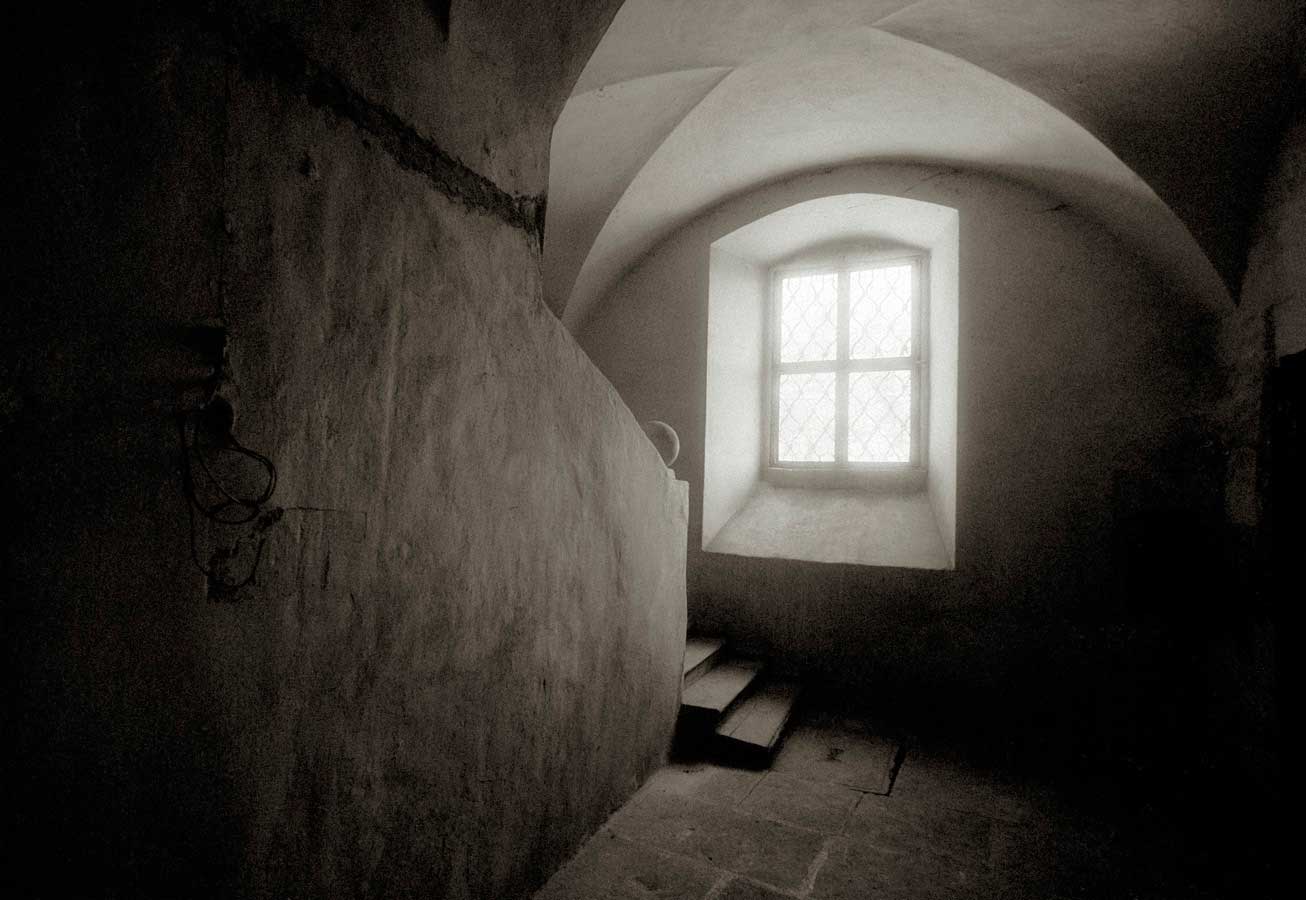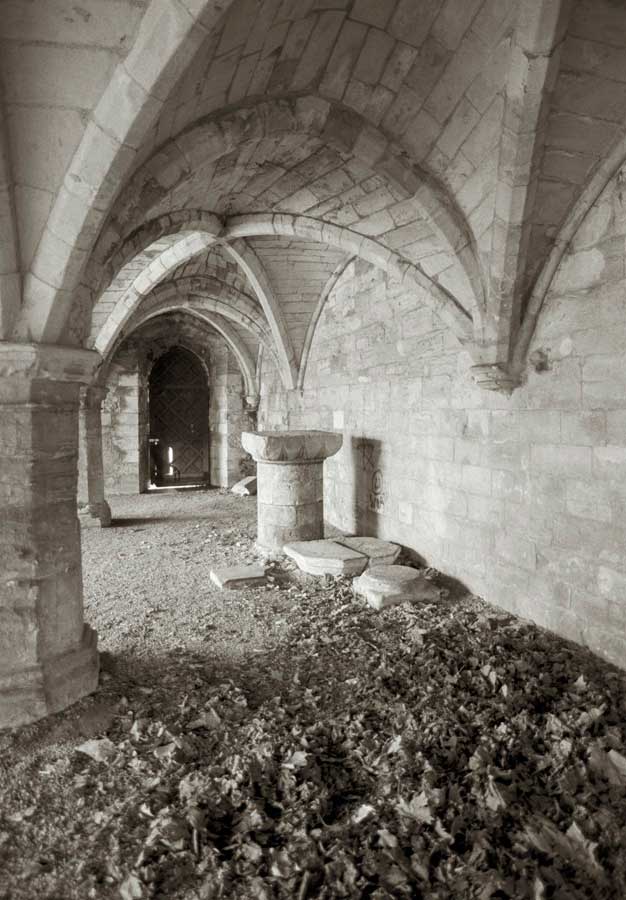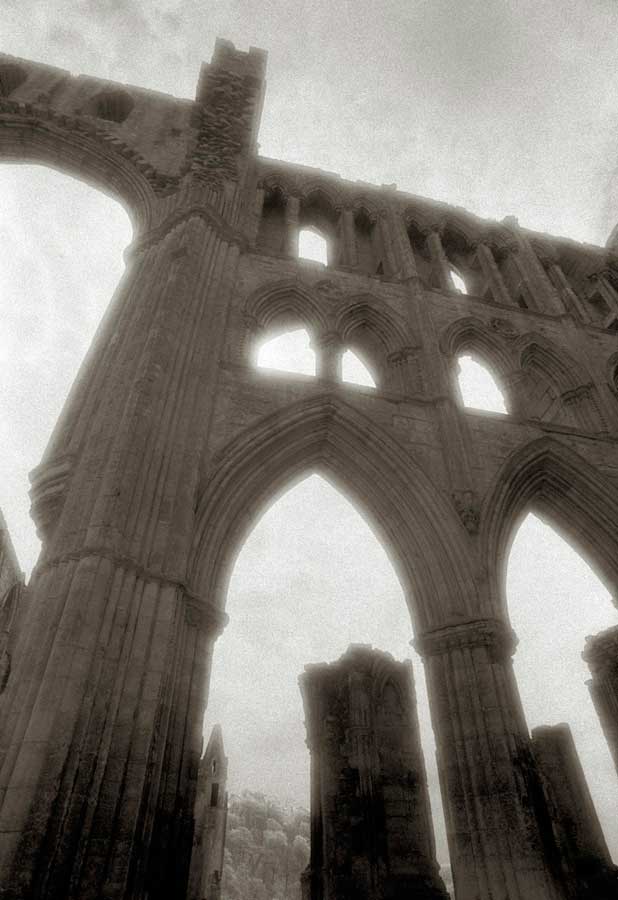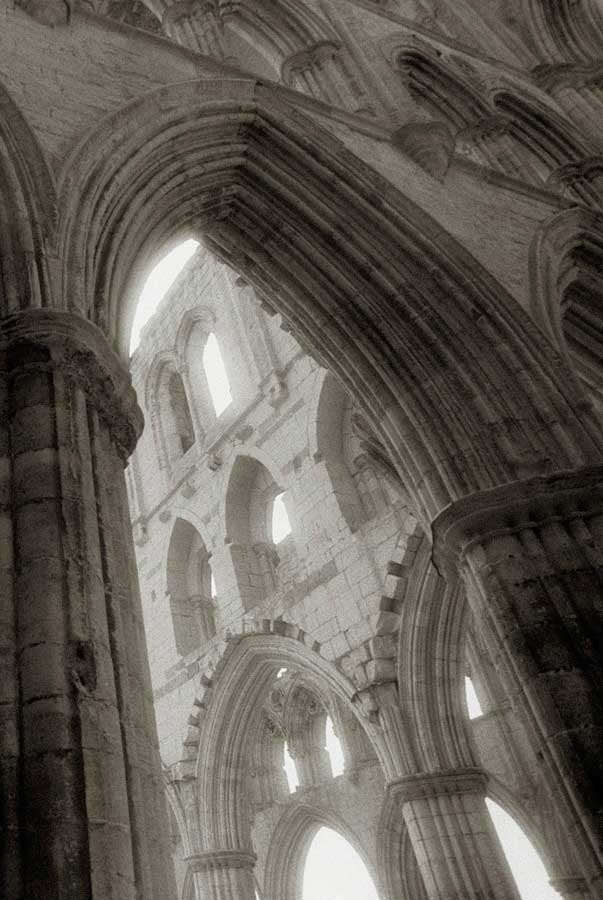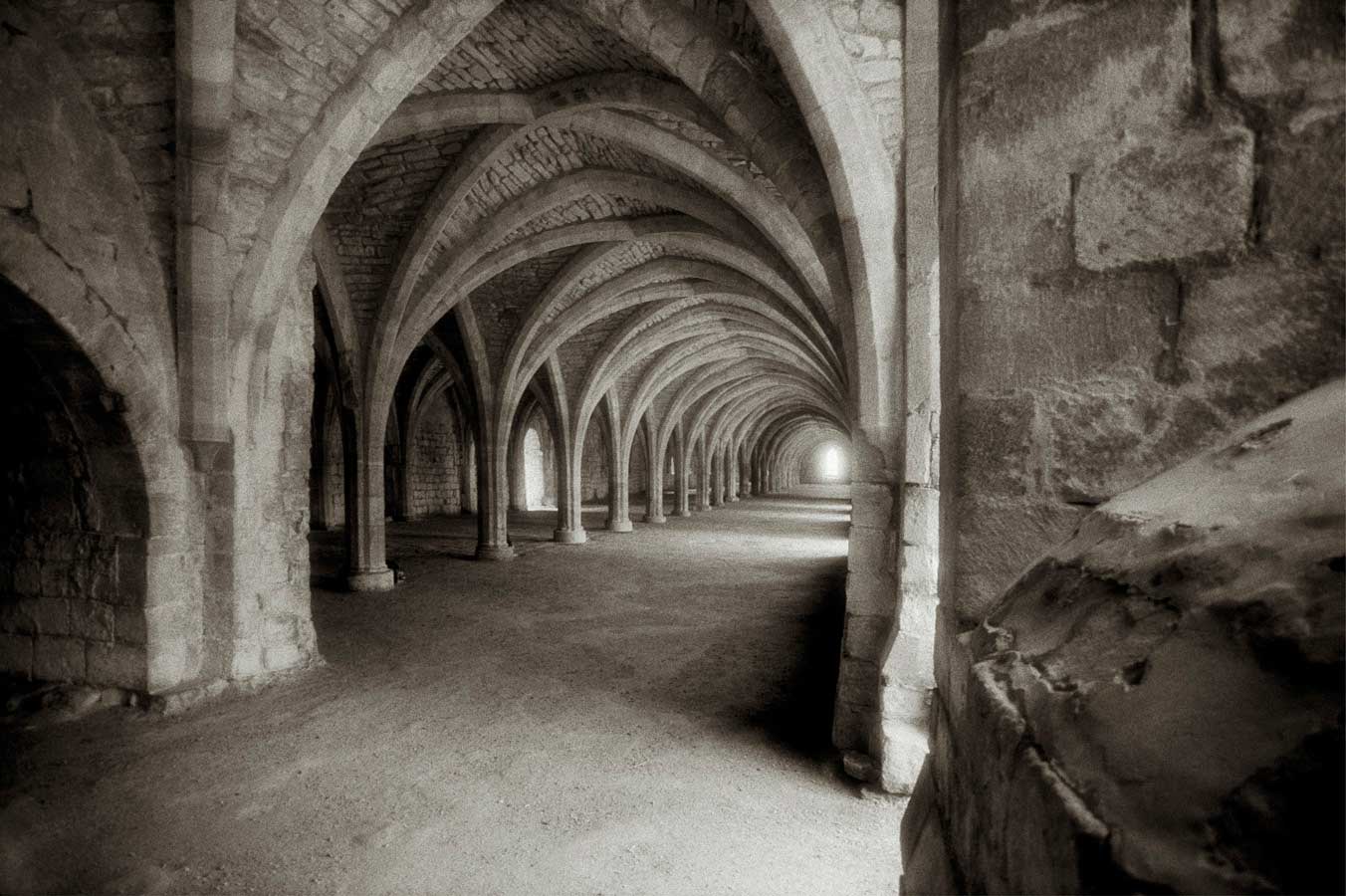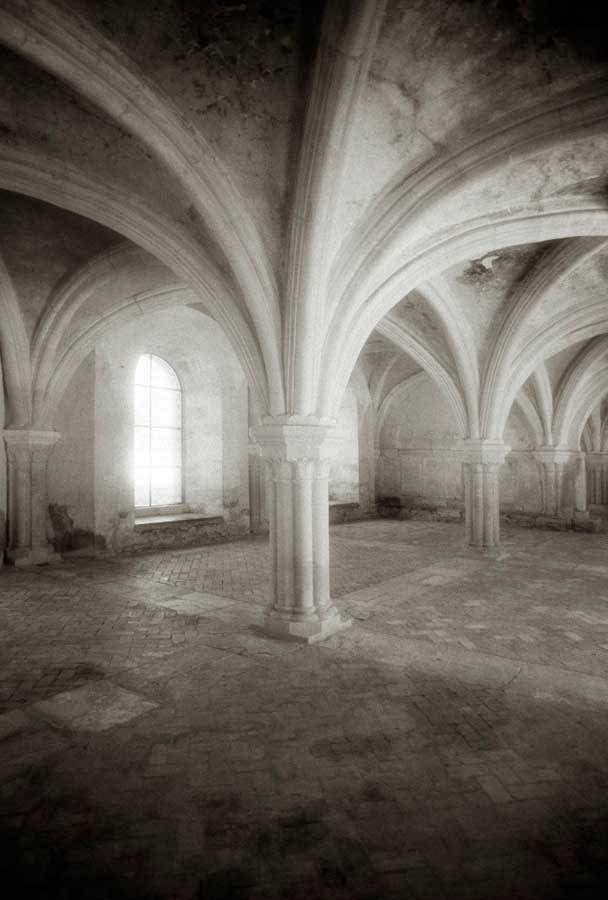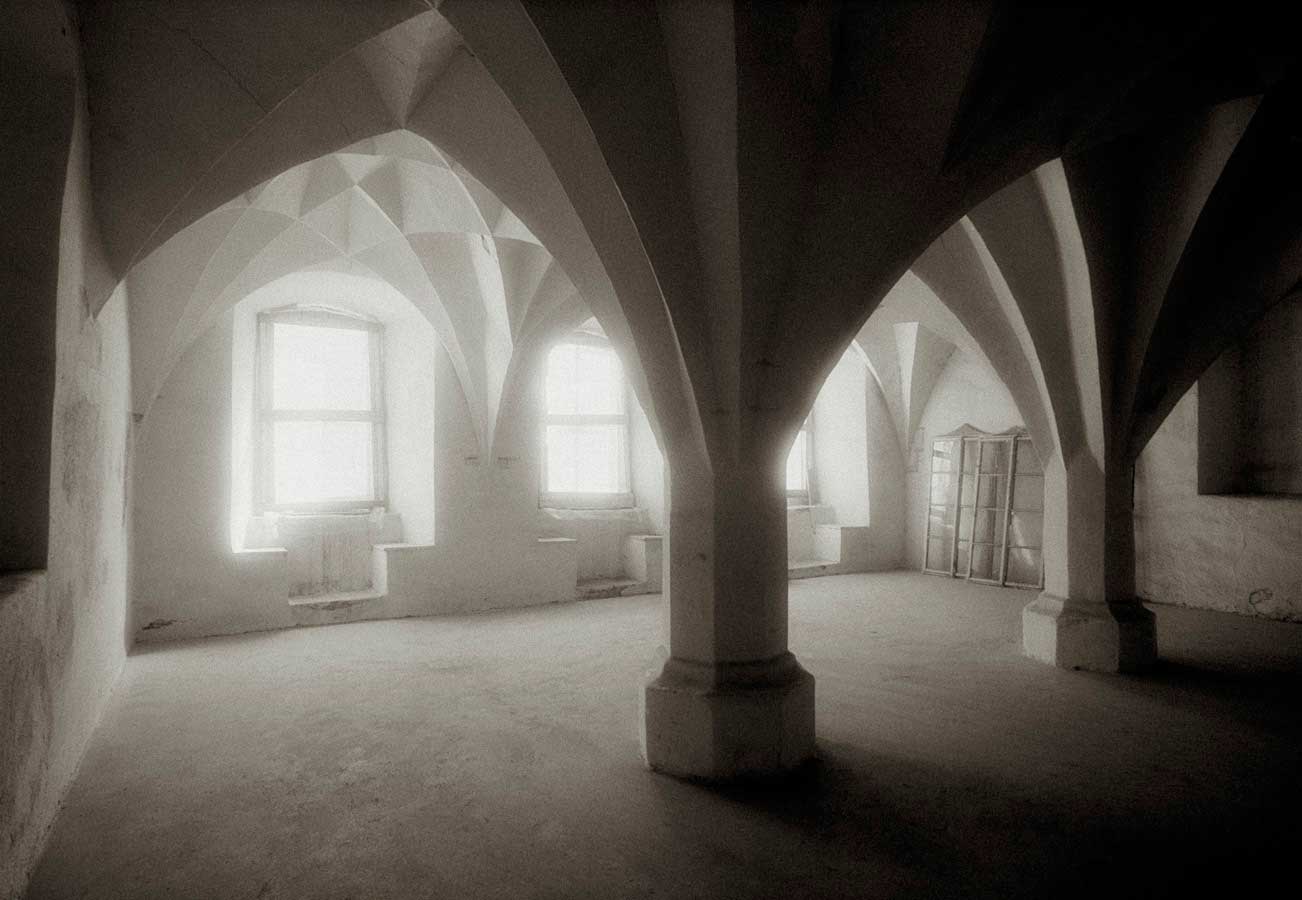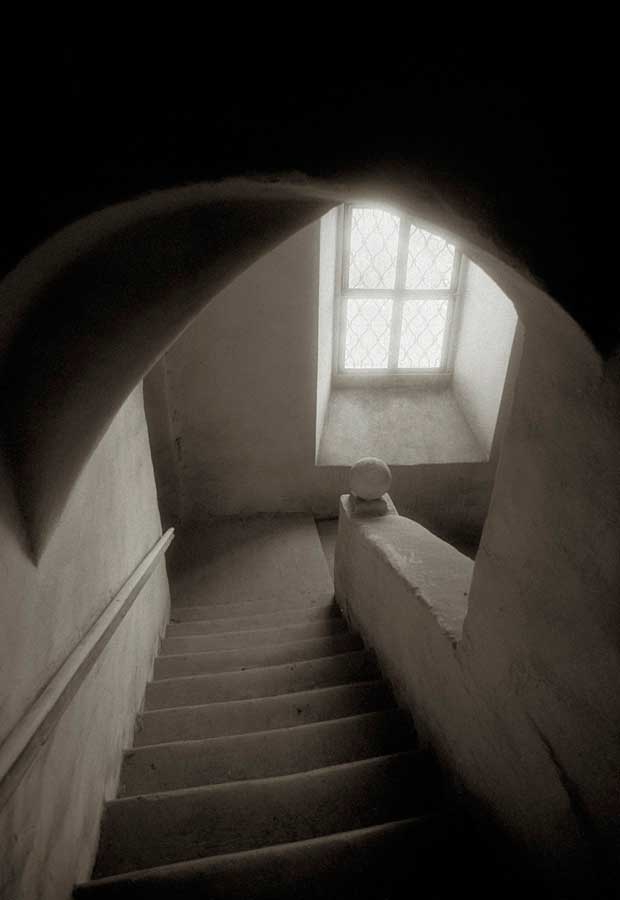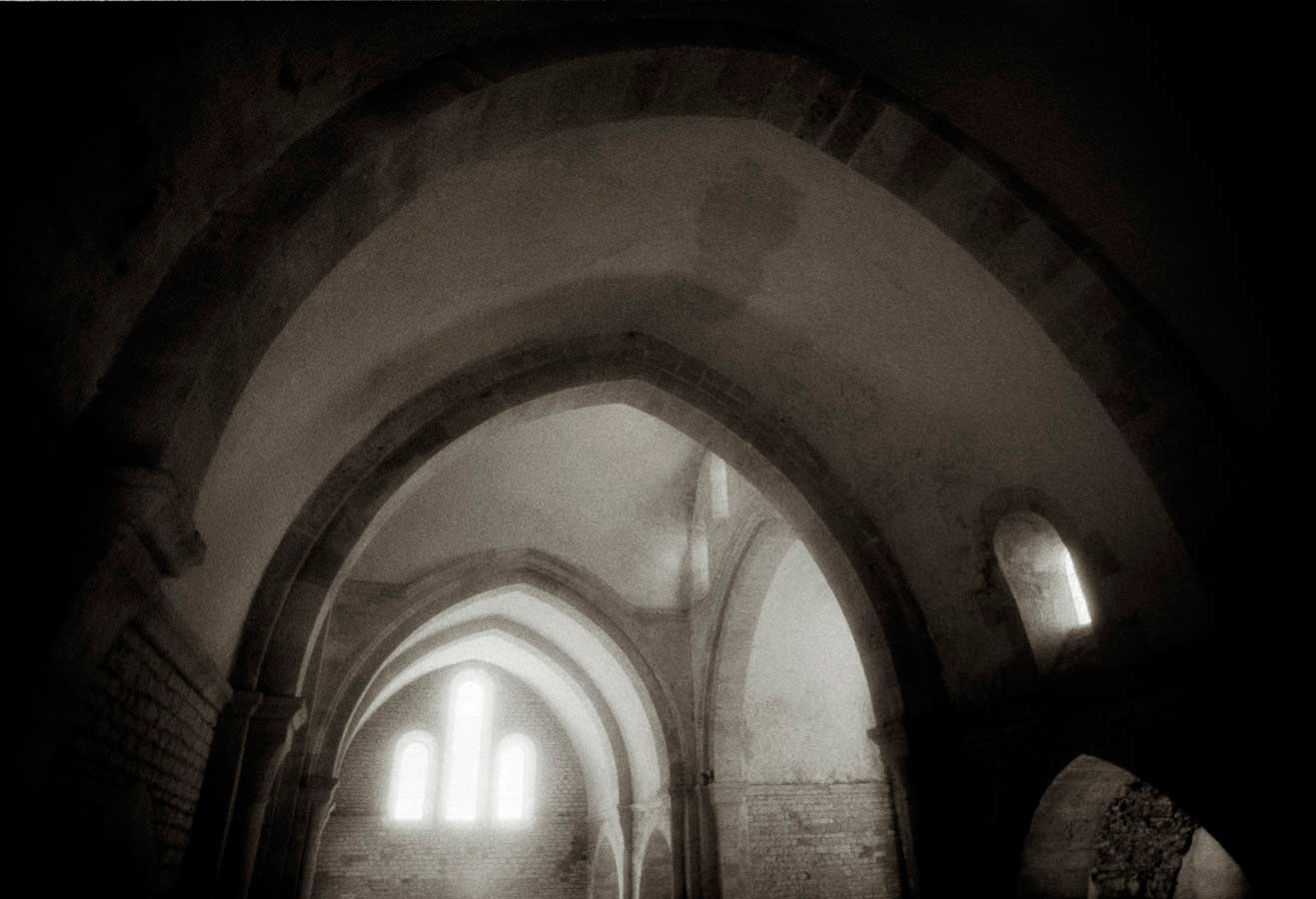In 1997 I was visiting with my friend Connie, who at the time was teaching English in Kadan, a small-town northwest of Prague. One of our photo adventures was visiting a centuries old Franciscan Monastery at the edge of town. It was run down and in bad need of restoration, but still a great place to explore with our cameras. The subject dovetailed with my interests in the architectural space, but never had I really explored a space this old. I found myself not only interested in making photographs, but also the history of monasteries and abbeys and the part they played in medieval societies. The following year I was in France on assignment for Microsoft to photograph Mont St. Michel in Normandy. For a week we would roam the vast halls of the Abbey and I was hooked on the majesty of such a structure. After that experience, whenever I traveled in Europe, I sought out the abbeys. Some were still working monasteries, but many in ruin, especially in England. The dissolution of the monasteries began in 1536 by Henry the VIII. In breaking with Rome to form the church of England, the king destroyed most of the monasteries and stripped them of their great wealth. In addition to making photographs, I would often just pause and sit in a quiet place and try to imagine the life of a monk, the life of the monastery. After all they were the keepers of knowledge and culture during the dark ages of Europe. With vows of poverty and chastity among other things, they would become known not only for their writings, but inventing such luxuries as Champaign and cappuccino. I did a show of this work at the Sisko Gallery in the fall of 2007. I compared the work to images I had made of the monuments in Washington, DC. The show was titled “Sacred and Secular: Architecture of Reason”. I wanted to show structures built to a higher power. Similar in many respects, yet to serve completely different ideologies. But in both cases, meant to stand the test of time.

